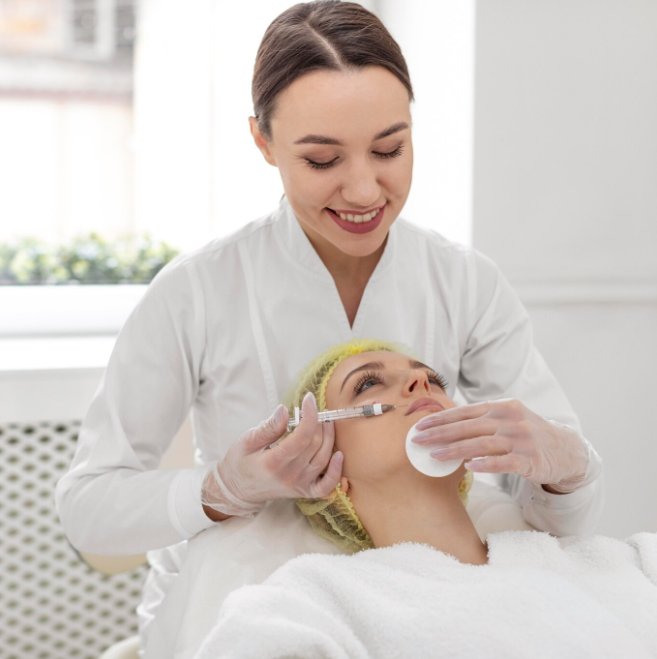Testosterone Replacement Therapy (TRT) is an effective treatment for men experiencing low testosterone levels, offering benefits such as improved energy, mood, and sexual health. For many international patients, traveling abroad for TRT can provide access to specialized care, advanced technology, and cost-effective treatment.
This guide explains how TRT works for international patients—from the initial consultation to follow-up care—helping you understand the process and prepare for a successful treatment journey abroad.
Step 1: Initial Consultation — Virtual or In-Person
Virtual Consultation Before Travel
- Most reputable TRT clinics catering to international patients offer virtual consultations via video call or phone.
- During this consultation, you’ll discuss symptoms, medical history, and previous treatments with a hormone specialist or endocrinologist.
- The doctor may request recent lab test results or recommend specific tests to be done locally before your trip.
- This step helps tailor your treatment plan and confirms whether TRT is right for you before you travel.
In-Person Consultation Upon Arrival
- Once you arrive, you’ll have an in-depth medical assessment, including physical exams and additional lab testing if necessary.
- This ensures up-to-date information on your hormone levels and overall health status before starting therapy.
- You’ll also discuss treatment options, expected outcomes, and potential risks with your doctor.
Step 2: Lab Testing — Accurate Diagnosis for Customized Therapy
- Clinics for international patients use internationally accredited laboratories for hormone testing, including total testosterone, free testosterone, estradiol, luteinizing hormone (LH), follicle-stimulating hormone (FSH), PSA, hematocrit, and liver function tests.
- If you already have recent lab work from your home country, bring copies to your consultation; however, additional local testing is often required to confirm baseline levels.
- Accurate lab results allow doctors to design a personalized TRT regimen tailored to your unique hormonal profile and health needs.
Step 3: Types of Testosterone Replacement Therapy Offered
International patients typically have access to the full spectrum of TRT treatment types:
1. Injectable Testosterone
- Intramuscular or subcutaneous testosterone injections are commonly used for quick, effective hormone replacement.
- Clinics teach patients or caregivers proper injection techniques, or provide administration during visits.
2. Topical Gels and Creams
- Testosterone gels offer a non-invasive option, applied daily to the skin.
- International patients can receive instructions on safe application and precautions to avoid transfer to others.
3. Pellet Implants
- Small testosterone pellets implanted under the skin provide long-lasting hormone release over 3 to 6 months.
- This option suits travelers who want fewer clinic visits and steady hormone levels.
4. Combination and Customized Protocols
- Many clinics use a blend of therapies or adjust dosing schedules to optimize hormone balance and reduce side effects.
- The choice depends on patient preference, lifestyle, and specific health factors.
Step 4: Follow-Up and Monitoring for International Patients
- Follow-up is critical for safe and effective TRT. For travelers, this involves a coordinated plan between the overseas clinic and your local healthcare provider.
- Most clinics schedule follow-up visits every 3 to 6 months, which can be done via telemedicine or in-person, depending on your location and preference.
- During follow-up, doctors monitor hormone levels, blood counts, liver function, and prostate health to adjust therapy as needed.
- Digital health platforms or apps may be provided for symptom tracking, medication reminders, and direct communication with your care team.
Step 5: Continuity of Care Post-Treatment
- Before leaving, international patients receive detailed reports on their treatment, lab results, and next steps.
- Clinics often assist in arranging medication refills locally or via international shipping services to maintain uninterrupted therapy.
- Coordination with your home healthcare provider is essential to ensure ongoing monitoring, manage side effects, and update treatment plans.
Additional Considerations for International TRT Patients
- Travel and medical visas: Check the destination’s requirements and plan accordingly.
- Language support: Many clinics have multilingual staff or translators to assist international patients.
- Cost transparency: Confirm all fees upfront, including consultations, labs, medications, and follow-ups.
- Safety protocols: Accredited clinics follow strict hygiene and patient safety measures, especially important during travel.
Summary
Testosterone Replacement Therapy for international patients involves careful planning, personalized treatment protocols, and ongoing collaboration between your overseas clinic and local healthcare providers. Through virtual consultations, precise lab testing, diverse treatment options, and structured follow-up, you can safely and effectively manage low testosterone—no matter where you live.




